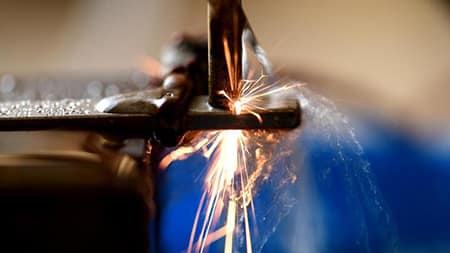Prototipagem rápida has revolutionized the landscape of product development by significantly reducing the time and cost associated with creating physical prototypes. This technology allows designers and engineers to quickly transform digital models into tangible objects, enabling iterative testing and refinement. This article provides an in-depth analysis of rapid prototyping, exploring its methods, benefits, challenges, and its role in fostering innovation across various industries.

Methods of Rapid Prototyping
- Stereolithography (SLA): SLA uses a laser to solidify layers of liquid resin, building the prototype from the bottom up. It is known for producing highly detailed and smooth prototypes.
- Selective Laser Sintering (SLS): SLS uses a laser to sinter powdered material, such as nylon or polyamide, to create a solid object. This method is suitable for complex geometries and functional prototypes.
- Fused Deposition Modeling (FDM): FDM, commonly used in desktop 3D printers, extrudes thermoplastic filament layer by layer to create the prototype. It is cost-effective and versatile for a wide range of applications.
- Digital Light Processing (DLP): Similar to SLA, DLP uses a digital light projector to cure resin layers. It offers high-resolution prototypes and is often used for intricate designs.
Benefits of Rapid Prototyping
- Time Efficiency: Rapid prototyping drastically cuts down the time from design to prototype, often from weeks to just a few hours, allowing for faster product development cycles.
- Cost Reduction: By eliminating the need for tooling and molds, rapid prototyping reduces initial investment costs, making it accessible for startups and small businesses.
- Iterative Design: The ability to quickly produce prototypes enables designers to test, evaluate, and refine designs multiple times, leading to better final products.
- Improved Communication: Physical prototypes serve as a universal language between designers, engineers, and stakeholders, facilitating clearer communication and understanding of the product concept.
Challenges of Rapid Prototyping
- Material Limitations: The range of materials available for rapid prototyping is limited compared to traditional manufacturing methods, which can restrict the functionality and durability of prototypes.
- Surface Finish: Prototypes often require additional finishing processes to achieve the desired surface quality, which can add time and cost to the development process.
- Scale and Accuracy: Some rapid prototyping methods may have limitations in terms of scale and accuracy, which can be a challenge for products with precise dimensions.
Analysis of Rapid Prototyping in Various Industries
- Automotive: The automotive industry uses rapid prototyping for concept modeling, functional testing of parts, and tooling. It has significantly reduced the time to market for new vehicle designs.
- Healthcare: Medical professionals utilize rapid prototyping to create custom implants, prosthetics, and surgical guides, leading to personalized patient care and improved outcomes.
- Aerospace: Aerospace companies benefit from rapid prototyping for lightweight components and complex geometries, which is crucial for fuel efficiency and performance.
- Consumer Goods: Rapid prototyping allows consumer goods companies to test product designs with users, ensuring that the final product meets consumer expectations and preferences.
The Role of Rapid Prototyping in Innovation
- Encouraging Experimentation: The low cost and speed of rapid prototyping encourage designers to experiment with new ideas, leading to innovative solutions that might otherwise be overlooked.
- Facilitating Collaboration: Rapid prototyping tools are often accessible to non-experts, enabling cross-disciplinary collaboration and the convergence of ideas from various fields.
- Accelerating the Design Thinking Process: The iterative nature of rapid prototyping aligns well with the design thinking methodology, allowing for faster validation and refinement of ideas.
Conclusão
Rapid prototyping has emerged as a transformative technology in the product development process. Its ability to quickly and cost-effectively produce prototypes has democratized innovation, allowing smaller players to compete with industry giants. While challenges such as material limitations and surface finish remain, the benefits of time efficiency, cost reduction, and iterative design are compelling. As rapid prototyping technologies continue to advance, we can expect an even greater impact on product development across all industries, pushing the boundaries of design and manufacturing. The future of rapid prototyping holds the promise of more sophisticated materials, improved accuracy, and seamless integration with traditional manufacturing processes, further solidifying its role as a catalyst for innovation.
I take pleasure in, result in I found exactly what I was taking a lolk for.
You haqve ended my 4 day lonbg hunt! God Blesss you man. Have a great day.
Bye http://boyarka-Inform.com
Olá,
I’m glad to receive your comments. What kind of help do you need?
Kind greetings,